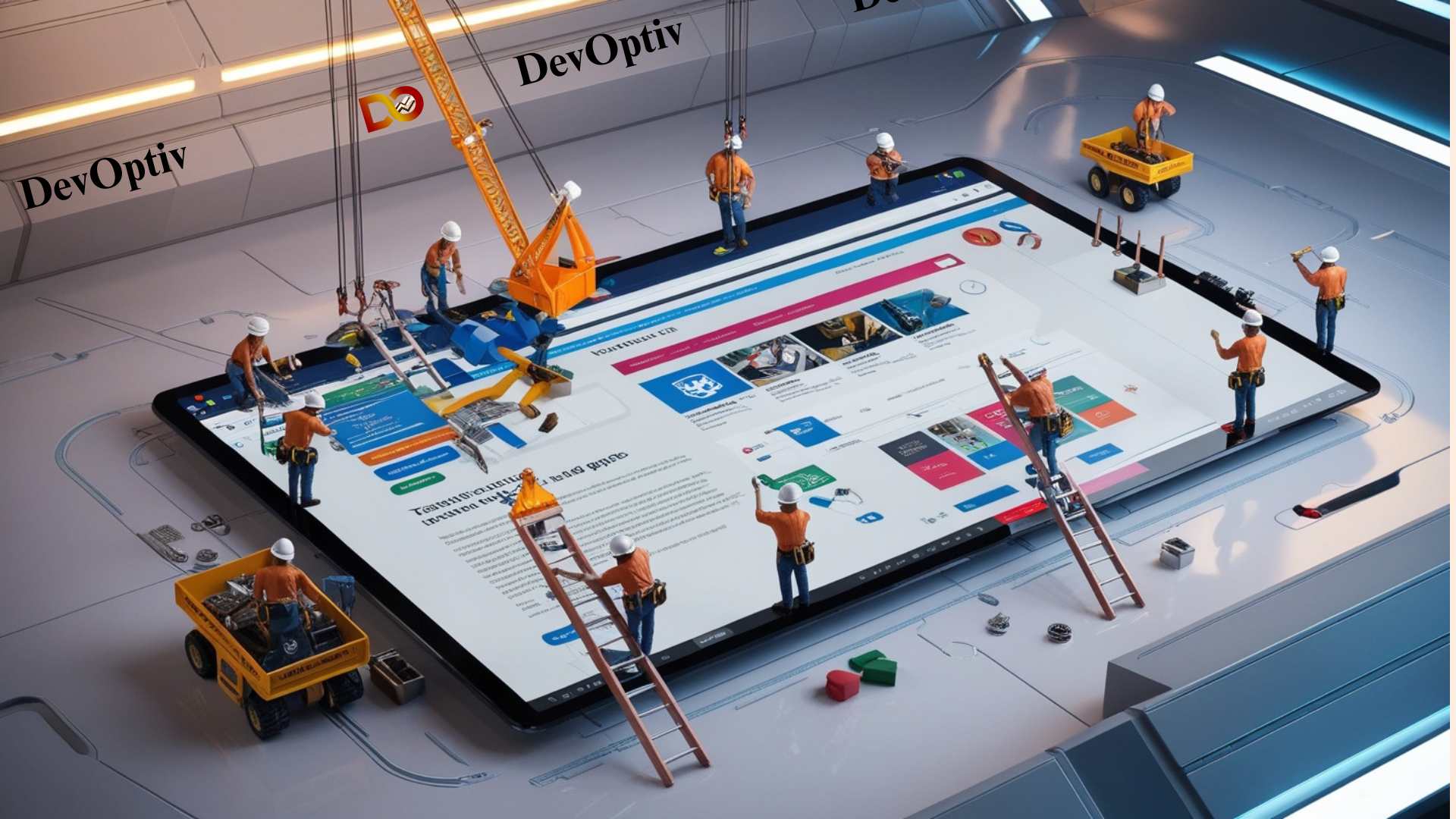
1.Introduction: Why Medical Websites Require Specialized Design & Development
Did you know that 73% of patients judge a healthcare provider’s credibility based on their website design? A well-designed Medical Website Design & Development strategy is more than just an online presence—it builds trust, improves patient engagement, and ensures compliance with healthcare regulations.
Common Problems with Medical Websites
Many healthcare providers face challenges with outdated medical website design and development that reduce efficiency. Here are the main issues:
- Loss of Patient Trust: An outdated or unprofessional site can make a provider seem unreliable, discouraging potential patients from seeking care.
- Legal & Security Risks: Non-HIPAA-compliant medical website development can expose sensitive patient data, leading to hefty fines and reputational damage.
- Poor User Experience (UX): When a website is difficult to navigate, slow to load, or not mobile-friendly, patients struggle to find essential information, schedule appointments, or contact the practice.
Why Specialized Healthcare Web Development Matters
Medical Website Design & Development isn’t just about aesthetics; it involves secure, high-performing solutions that enhance patient experience and ensure regulatory compliance. Because of this, expert healthcare website development services are essential for success.
✅ At DevOptiv, we create HIPAA-compliant, patient-friendly healthcare websites with security, usability, and efficiency in mind. Whether you need a redesign or a new website, we help you build an online presence that meets industry standards and patient expectations.

Stay with DevOptiv as we explore key strategies for medical website development, focusing on trust, efficiency, and compliance.
2. Key Features of a High-Performing Medical Website
A high-performing medical website combines usability, security, and advanced healthcare functionalities to meet patient expectations and industry standards. Below are the key features:
2.1 Patient-Centric UI/UX Design
- Mobile-first approach: Ensures accessibility across all devices, enhancing the user experience.
- ADA-compliant features: Includes alt text, screen reader compatibility, and wheelchair accessibility icons to cater to all users.
- High-converting CTAs: Clear and visible buttons like “Book Appointment,” “Contact Us,” and “Download Forms” encourage user engagement and streamline the patient journey.
2.2 Security & HIPAA Compliance
- SSL encryption: Protects sensitive patient data from cyber threats, ensuring confidentiality.
- Secure patient portals: Facilitate private communication and easy access to medical records.
- GDPR-compliant integrations: Ensure that patient data is handled securely and in line with global data protection regulations.
- Avoidance of third-party plugins: Reduces the risk of data leaks and security vulnerabilities by prioritizing built-in, secure solutions.
2.3 Specialized Healthcare Website Features
- Telemedicine integration: Enables virtual consultations, providing convenience for both doctors and patients.
- EHR/EMR system compatibility: Ensures seamless integration with electronic health records to improve workflow and efficiency.
- Online prescription refills & lab result portals: Enhance self-service options, reducing administrative burdens while improving patient satisfaction.
By incorporating these features, web development for healthcare ensures that medical websites remain user-friendly, compliant, and effective in driving patient engagement.
Next, we’ll explore how to optimize your healthcare website for better search rankings and patient retention.
3. How to Choose the Best Medical Web Design Company
Finding the right medical web design company is essential for developing a secure, user-friendly, and high-performing healthcare website. Because the market is filled with options, evaluating potential agencies thoroughly ensures you select one that meets industry standards. Below, we highlight essential questions to ask and warning signs to watch out for when choosing a healthcare web development company.
3.1 Key Questions to Ask Before Hiring a Medical Web Development Company
Before finalizing your decision, asking targeted questions can help determine if the company aligns with your healthcare organization’s specific requirements.
✅ Do you have experience with HIPAA-compliant designs? Ensuring compliance with HIPAA regulations is crucial for protecting patient data. A reliable healthcare web development company should have a track record of implementing HIPAA-compliant features to maintain security and privacy.
✅ Can you share case studies in dermatology, orthopedic, or urgent care web design? Reviewing past projects helps assess their medical web developer expertise in healthcare fields such as orthopedic website redesign, dermatology portals, or urgent care platforms.
✅ How do you handle post-launch support, SEO, and updates? A website’s success depends on continuous optimization. Post-launch services, including healthcare website design updates, security patches, and SEO improvements, play a critical role in maintaining performance and visibility.
3.2 Red Flags to Avoid
Choosing a medical web development partner requires careful assessment. Certain red flags indicate a lack of industry experience or commitment to quality.
❌ Relying on generic templates instead of healthcare-specific solutions. Medical websites require custom features like secure patient portals, HIPAA-compliant forms, and mobile-friendly telemedicine integrations. A one-size-fits-all template may not address these needs effectively.
❌ Neglecting SEO strategies and local search optimization. A successful medical web development project incorporates SEO best practices to ensure strong online visibility. Without keyword research and local SEO integration, your healthcare website may struggle to attract relevant traffic.
By conducting thorough research, asking critical questions, and identifying potential warning signs, you can confidently choose a medical web design company that delivers a secure, high-performing, and patient-friendly website tailored to your healthcare needs.
4. Latest Trends in Medical Website Design for 2025
As technology continues to evolve, modern medical website developers is adapting to enhance patient engagement, improve accessibility, and optimize healthcare interactions. Below are some of the most influential trends shaping medical website inspiration in 2025.
🔥 AI-Powered Chatbots for Symptom Analysis & Appointment Scheduling
Artificial intelligence is revolutionizing healthcare web design by enabling chatbots to assist patients in real time. These AI-driven assistants can analyze symptoms, guide patients to appropriate care options, and even streamline appointment scheduling. By integrating AI chatbots, healthcare providers can improve patient satisfaction while reducing administrative burdens.
🎨 3D Visuals & Interactive Anatomy Diagrams
Websites specializing in orthopedic web design and plastic surgery platforms are embracing interactive 3D visuals. These diagrams help patients better understand procedures, anatomy, and treatment options. Not only do they provide an engaging experience, but they also enhance comprehension, making complex medical information more accessible.
🎙 Voice Search Optimization for “Best Doctor Near Me” Queries
With the increasing use of voice assistants, voice search optimization is now a crucial component of medical website inspiration. Patients frequently search for services using phrases like “best doctor near me” or “urgent care open now.” Optimizing websites for conversational queries ensures they rank higher in local search results, driving more traffic and improving accessibility.
🌙 Dark Mode for Better Nighttime Readability
Dark mode has become a sought-after feature in modern medical website design due to its benefits for eye strain reduction and improved readability in low-light environments. This feature not only enhances user experience but also aligns with the broader trend of providing patients with customizable viewing options.
By embracing these trends, healthcare web development companies can create telehealth website development services that is innovative, patient-focused, and optimized for future digital demands.
5. DevOptiv’s Success Stories: Medical Website Case Studies
When selecting healthcare web design experts, real-world success stories provide valuable insights into a company’s expertise. At DevOptiv, we have helped medical practices transform their online presence with customized, patient-friendly, and SEO-optimized designs. Here are two compelling case studies that showcase our work in dermatology website design and urgent care optimization.
✅ Case Study 1: Dermatology Clinic Website Redesign
Challenge: The clinic struggled with an outdated website that resulted in high bounce rates and low patient engagement. Navigation was cumbersome, and mobile users found it difficult to book appointments.
Solution: We implemented a mobile-friendly redesign with an intuitive layout, seamless navigation, and integrated online booking functionality. To enhance user experience further, we optimized page speed and ensured ADA compliance for accessibility.
Results: 📈 A 40% increase in appointment requests within three months, demonstrating the impact of user-centered design in dermatology web design.
✅ Case Study 2: Urgent Care Center SEO Revamp
Challenge: The center had poor search engine visibility, making it difficult for local patients to find their services online. The absence of local SEO optimization meant that competitors ranked higher for critical searches.
Solution: Our team implemented a comprehensive SEO strategy, optimizing on-page content, metadata, and local listings. We also set up and fine-tuned the center’s Google My Business profile, ensuring accurate business information and increased local search presence.
Results: 🚀 A 2x increase in organic traffic within three months, leading to higher patient inquiries and improved online reputation.
By leveraging industry expertise and innovative solutions, DevOptiv continues to deliver impactful results for medical practices, from plastic surgery web design experts to urgent care facilities. Our approach focuses on creating websites that not only look great but also perform exceptionally well in search rankings and patient engagement.
6. How Much Does Medical Website Development Cost?
Understanding the cost of healthcare website development is crucial for medical practices looking to establish a strong online presence. The total cost depends on several factors, including customization, compliance requirements, and essential integrations. Below, we break down the primary cost determinants and pricing ranges to help you make an informed decision.
💰 Factors Influencing Cost
- Custom vs. Template-Based Websites: A custom medical practice website development project costs more due to tailored designs and unique functionalities. Template-based solutions, while affordable, often lack flexibility and scalability.
- Complexity of HIPAA Compliance: Websites handling patient data must adhere to HIPAA regulations, requiring advanced security measures and encryption protocols, which increase development costs.
- Integrations with Essential Systems: The inclusion of EHR (Electronic Health Records), payment gateways, telemedicine solutions, and patient portals can significantly impact pricing. More integrations mean higher costs but also better functionality.
💸 Average Price Ranges
- Basic Website: $800 – $6,000 (Ideal for small clinics requiring simple online presence)
- Advanced Website (Custom Features): $6,000 – $20,000 (Includes enhanced UX, HIPAA compliance, and patient portal integration)
- Web-App Development: $10,000 – $200,000 (For medical platforms requiring complex backend functionalities, AI-driven chatbots, or telemedicine features)
⚠️ Tip: Invest in SEO Early
Building SEO into your healthcare website redesign from the start can prevent costly updates later. A well-optimized website ranks higher in search results, attracting more patients without relying heavily on paid advertisements.
Whether you’re a small practice or a large healthcare provider, understanding these cost factors ensures you allocate your budget effectively for a high-performing and compliant medical website.
check our blog on SEO for Healthcare
7. DIY Medical Website Builders vs. Hiring Experts
When creating a medical website, choosing between medical website builders and hiring a hospital web design agency is a critical decision. While DIY platforms offer affordability and ease of use, they often lack essential features needed for a professional and compliant healthcare website. Below, we examine the pros and cons of DIY website builders and discuss when hiring experts is the better option.
Pros & Cons of DIY Website Builders (Wix, Squarespace, WordPress)
✅ Affordability & Ease of Use: Platforms like Wix and Squarespace provide budget-friendly solutions with simple drag-and-drop features, making them accessible to beginners. ✅ Quick Deployment: DIY builders allow users to set up a basic website within hours without extensive technical knowledge. ❌ Lack of HIPAA Compliance: Most medical website builders do not offer built-in security measures required for protecting sensitive patient information. ❌ Limited SEO & Performance Optimization: DIY platforms often struggle with in-depth healthcare web design services, impacting search rankings and site performance.
When to Hire Experts?
If your website requires advanced features and regulatory compliance, hiring professionals is the best choice.
- Custom Patient Portals & Appointment Booking: A hospital web design agency can develop tailored solutions for multi-location clinics and specialty practices.
- HIPAA Compliance & Security: Ensuring compliance with industry regulations requires expertise in encryption, secure data handling, and risk assessment.
- SEO-Optimized Healthcare Web Design Services: Professional developers implement advanced SEO strategies, boosting visibility and attracting more patients.
While DIY builders may be suitable for small clinics with minimal requirements, hiring experts ensures a robust, secure, and high-performing website that meets industry standards and patient expectations.
8. Conclusion & Next Steps
Building a successful medical website requires careful planning, industry expertise, and a strong focus on security and user experience. To ensure that your healthcare site is both functional and competitive, it’s essential to prioritize compliance, accessibility, and SEO-driven visibility.
📌 Key Takeaways:
✅ HIPAA Compliance & Security: Protecting patient data is non-negotiable. A secure website ensures compliance with regulations and builds patient trust. ✅ User Experience & Accessibility: A seamless, mobile-friendly design improves engagement and ensures that all users, including those with disabilities, can navigate your site with ease. ✅ SEO & Local Search Optimization: Implementing a strong SEO strategy enhances your website’s visibility, driving patient inquiries and increasing conversions.
🔹 Ready to upgrade your medical practice’s website?
If you’re looking for a HIPAA-compliant, user-friendly, and SEO-optimized healthcare website, now is the time to take action.

📞 Schedule a Free Consultation with DevOptiv today! Let’s build a website that supports your practice’s growth and enhances patient engagement.
9. Frequently Asked Questions (FAQs) for Medical & Healthcare Web Design Services
1.What makes DevOptiv a leading medical web design company?
To help you understand our expertise in medical website development, we’ve compiled the most relevant questions covering our healthcare web design services, pricing, and industry-specific solutions.
2. Can DevOptiv redesign an existing healthcare website to improve SEO and functionality?
Yes! Our healthcare website redesign services focus on improving UI/UX, optimizing page speed, and implementing SEO-driven healthcare web development strategies. Whether you need an update for a dermatology website design, an orthopedic website redesign, or a medical practice website development project, we ensure that your website meets modern performance standards.
3. Does DevOptiv offer industry-specific healthcare web design solutions?
3.Does DevOptiv offer industry-specific healthcare web design solutions?
Absolutely! We provide healthcare web development services tailored to various specialties, including dermatology web design, plastic surgery web design, orthopedic web design agency solutions, and hospital website development. Our industry expertise allows us to create websites that enhance patient engagement and business growth.
4.How much does medical website development cost with DevOptiv?
The cost of healthcare website development depends on several factors, including customization, compliance needs, and integrations:
Web Apps & Complex Solutions: $10,000 – $200,000 (For hospitals, telemedicine platforms, and advanced integrations) Investing in medical website design and SEO from the start can prevent costly redesigns later.
Basic Website: $800 – $6,000 (Ideal for small clinics and private practices)
Advanced Website: $6,000 – $20,000 (Includes HIPAA compliance, patient portals, and enhanced UX)
SAAS Platform(web-apps): $20,000 -$2,00,000
5.Why should I choose DevOptiv over DIY medical website builders?
While medical website builders like Wix, Squarespace, or WordPress provide affordability, they lack HIPAA compliance, SEO customization, and security optimizations necessary for healthcare web development. DevOptiv, as a hospital web design agency, delivers custom medical website development solutions that align with regulatory standards while maximizing performance and patient engagement.
📞 Want to learn more? Contact DevOptiv today!






